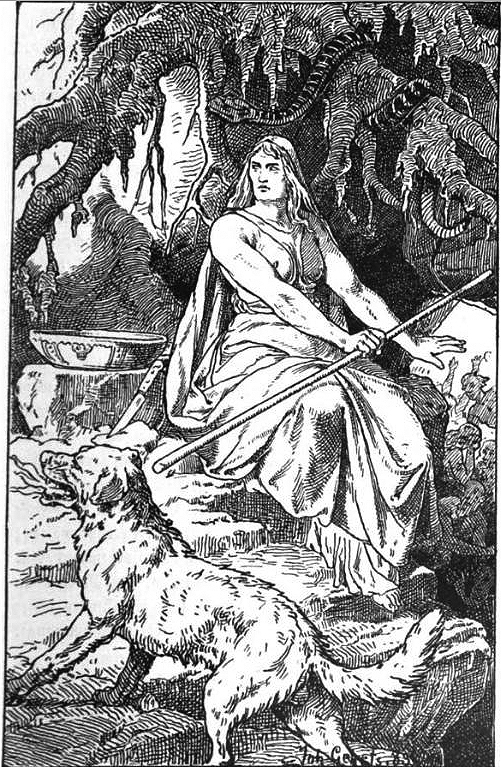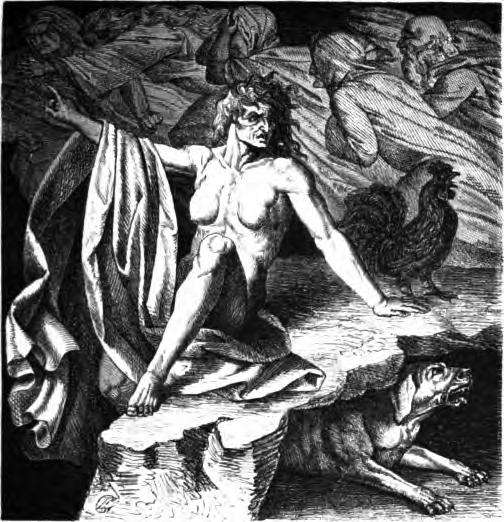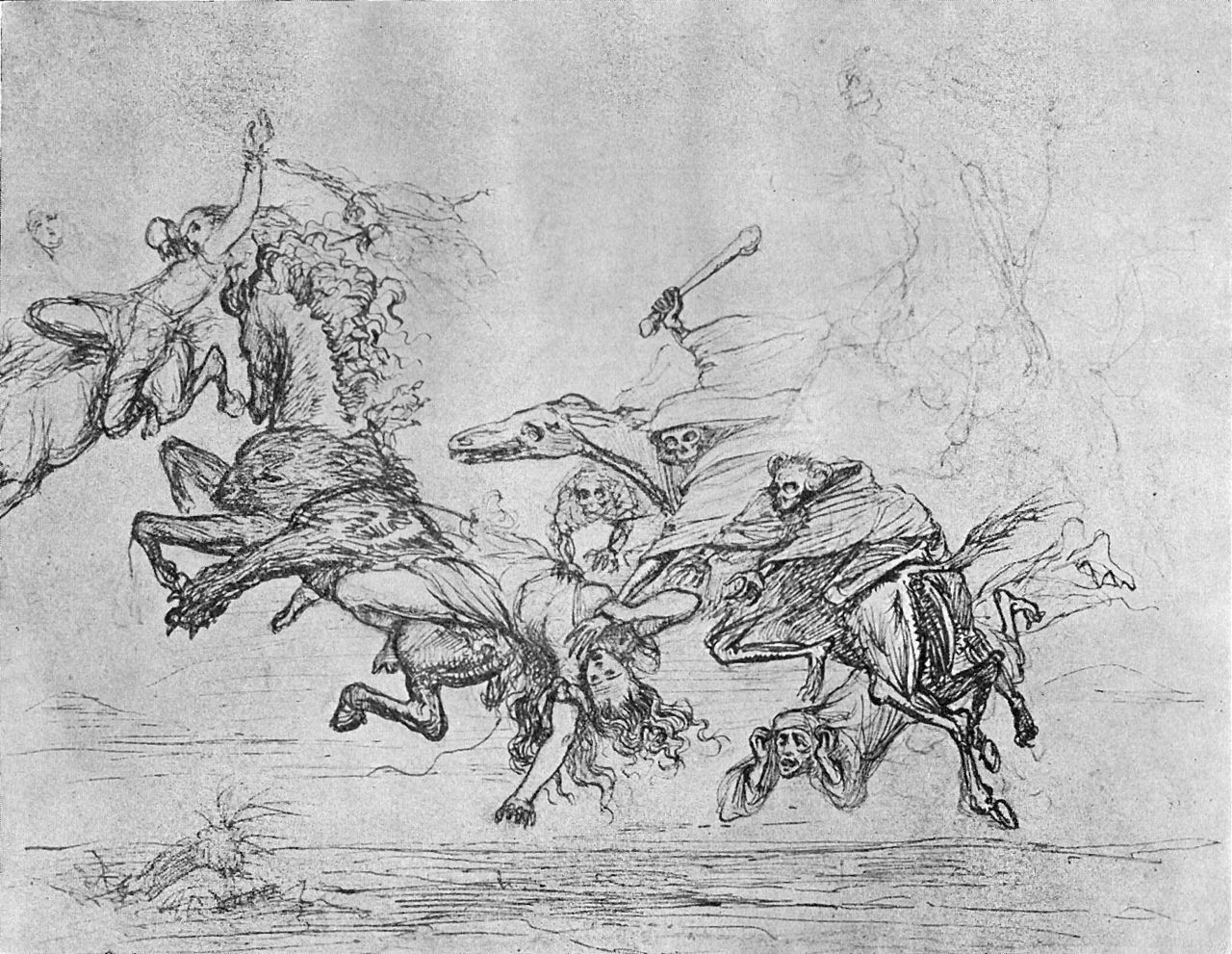Loki’s daughter, Hel, was the guardian of the realm of the dead in Norse mythology. She was the progeny of a demi-god. Hel was a dark and brooding presence but not necessarily evil. Odin’s son, Hermod, convinced her to release his brother, Balder, from Hel’s realm, even if he was not ultimately successful.
The word “Hel” derives from the Proto-Germanic stem, haljo-, meaning “hidden place.” It also has a Proto-Indo-European root, ḱel- (“to hide” or “cover”).
Who is Hel?
Hel is the only daughter of the trickster god Loki and the giantess Angrboda. Her monstrous siblings are the wolf Fenrir and the serpent Jörmungandr. Although reports often refer to Hel as a goddess, she is really a demi-god (being the daughter of one) and half jötunn.
Viking descriptions of Hel depict her as being half-black or half-blue and half-white. She has a gloomy and threatening disposition.
Hel has a handmaiden and manservant called Ganglöt and Ganglati.
Is Hel a Norse Goddess?
Although often called “Goddess of Death” or “Goddess of the Underworld” and decreed by Odin to rule the realm of the dead, Hel is not attested in the Prose or Poetic Eddas as being a goddess of any kind.
Being the daughter of Loki, a demi-god, she is technically a demi-goddess, although no text or poem mentions her having special powers.
Additionally, in some stories, Odin cast Hel from the heavens into the underworld, where Hel then decided she would rule as Queen of Helheim.
Where Does Hel Live?
Hel lives in Hel, also known as Helheim.
A high fence surrounds Helheim, with the river Élivágar flowing past it. The canine guardian, Garmr or Garm, occupies the cave Gnipa.

Are Hela and Hel the Same?
Hela is a fictional Marvel character. She is based on the goddess Hel from Norse mythology.
Hela is the daughter of Odin, according to the lore in the movie “Thor: Ragnarok.” However, she is the daughter of Loki in Norse mythology.
Hel: Attestations in Norse Mythology
The Prose Edda
Hel appears in the Gylfaginning, a text featured in the Prose Edda.
Hermód (or Hermóðr), at Frigg’s request, rode to the realm of the dead on Sleipnir to request Baldr’s return after his blind brother Hodr, tricked by Loki, killed him with a mistletoe spear. After journeying for nine days, crossing the river Gjoll and managing to pass the maiden Módgunn, he arrived in Helheim. Hel agreed to allow Baldr to leave, but only if everything in the nine realms, dead or alive, wept for him:
If all things in the world, alive or dead, weep for him, then he will be allowed to return to the Aesir. If anyone speaks against him or refuses to cry, then he will remain with Hel.
Hel – Wikipedia
Everyone except Þökk, a giantess, cried for Balder despite the Æsir doing everything they could to convince her.
She said:
Alive or dead, the old man’s son has been no use to me. Let Hel hold what she has.
The Death of Baldr – Hurstwic Org
Consequently, Hel refused to let Baldr leave. We later discover the giantess was actually Loki in disguise.
In chapter 34, Hár (one of Odin’s many aliases) mentions Hel as one of the three offspring of Loki and Angrboda.

Who Killed Hel in Norse Mythology?
There is no record of Hel’s death in Norse mythology, not even during Ragnarök.
Hel and Ragnarök
Hel will recruit an army of the dead when Ragnarök comes around. With all their blood removed, Hel can move them onto the Naglfar (ship of human fingers and toenails) and sail to Vigrid to participate in Ragnarök.

